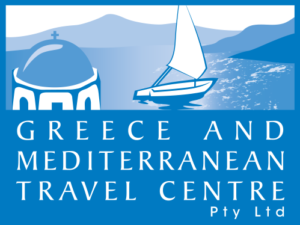Things to do
What to See in Rome
Colosseum: The Colosseum is an amphitheatre in the centre of the city of Rome, built as a gift to the Roman people during the reign of the Flavian emperors. It is the largest ancient amphitheatre ever constructed and was built between 70 to 80 AD, after which modifications we made throughout different reigning periods. The Colosseum could host approximately 50,000 to 80,000 spectators at various points in time over the centuries and was used for gladiator contests and public spectacles including executions, dramas, and re-enactments of famous battles. In the early medieval era, the building cease to be used for entertainment purposes and was later used for workshops, housing for a religious order, a fortress, and a Christian shrine. To this day, the Colosseum still holds strong as an iconic representation of Imperial Rome even after substantial damage from earthquakes and neglect. The Colosseum has connections to the Roman Catholic Church which is seen every Good Friday when the Pope leads a procession starting from the Colosseum in honour of the martyrs who died in the arena.
Roman Forum: The Roman Forum was intentionally located at the centre of the ancient city of Rome for important religious, political, and social activities. The traditional story goes that the Roman Forum was made as a neutral meeting area between Romulus and his rival Titus Tatius. The Roman Forum then went on to serve as a marketplace before public affairs were held in the area when the Roman Republic started around 500 B.C. Eventually statues, arches and other buildings were constructed to deal with overcrowding and to accommodate various and larger gatherings over different eras. There were several different temples built to honour men, and others were dedicated to gods or goddesses and some of the most well-known structures include the Senate House, Temple of Saturn, Arch of Titus, Temple of Vesta, and more. Today, tourists can get a first-hand look at the ancient ruins where excavations are ongoing, and historians are still attempting to discover new findings to determine Rome’s exact age.
Palatine Hill: No visit to Rome is complete without a thorough exploration of the ancient city from Palatine Hill. This magnificent hill towers over the Roman Forum and the Circus Maximus which offers spectacular views of the ruins of its ancient palaces. In Ancient Rome, Palatine Hill was considered to be one of the most desirable neighbourhoods in the city that was home to emperors and aristocrats.
Vatican City: Home to the Vatican Museums, the Sistine Chapel, St. Peter’s Basilica, St. Peter’s Square and more, Vatican City is the smallest country in the world and is bordered by the city of Rome. It is headquarters of the Roman Catholic Church and home to the Pope as well as a treasure trove of iconic architecture and art. Make plenty of time for the Vatican Museums which feature works by Raphael, Leonardo da Vinci, and Michelangelo spanning across kilometres from paintings to sculptures and mosaics. Take in the beauty of the Sistine Chapel where you will see the unforgettable artwork of Michelangelo on the ceiling which was completed during 1508 to 1512. It is important to note that all electronic devices are prohibited in the Sistine Chapel where photography is not allowed. No visit to Rome would be complete without witnessing one the largest churches ever built, St. Peter’s Basilica. The site is free to enter but long queues should be expected, especially during summer. One of the most recognisable pictures of Vatican City is St. Peter’s Square that was built between 1656 and 1667 and designed with two large colonnades intended to resemble the motherly arms of the church located directly in front of its Basilica.
Pantheon: Built between 133 to 125 AD, the Pantheon was a former Roman temple and is now a Catholic church most infamous for its rotunda design and concrete dome construction with a central opening to the sky. The Pantheon remains as the world’s largest unreinforced concrete dome and is one of the best-preserved Ancient Roman buildings due to its continuous use throughout history. Many architects and engineers have copied the Pantheon’s exemplary classical style which was once quite unique in Roman architecture.
Trevi Fountain: Rome’s most iconic fountain stands 26 meters tall and 49 meters wide with intricate Baroque style decorations that makes the Trevi Fountain a must-see site. Constructed on top of an ancient water source, it has most recently gone through restoration and cleaning which makes no better time to visit the Trevi Fountain. You have most likely seen Trevi Fountain appear in notable films including Roman Holiday and La Dolce Vita. According to legend, throwing three coins over the left shoulder using the right hand means you will return to Rome, fall in love, and marry. Luck or no luck, make sure you have spare change with you when you visit the Trevi Fountain!
Piazza Navona: Characterised by majestic fountains, baroque palazzi, street artists and tourists, Piazza Navona is central Rome’s elegant square that also features an Egyptian obelisk. Piazza Navona has three impressive fountains with the church of Sant’Agnese in Agone providing a breathtaking backdrop and is wrapped with restaurants and musicians that contribute to the lively atmosphere.
Trastevere: Take a trip across the Tiber river to Trastavere and stroll through this charming medieval neighbourhood. This is a great option to escape the crowds and uncover a hidden gem in Rome. This district reflects a labyrinth with endless shops, cafes and faded paintwork found along cobblestone side streets. Visit the 12th century Basilica di Santa Maria or stroll through Porta Settimiana and take in gorgeous views of Villa Farnesina, an opulent Renaissance villa that was home to many artists including Raphael. Do not miss out on Palazzo Corsini, a baroque palace with a grand collection of antique art.
